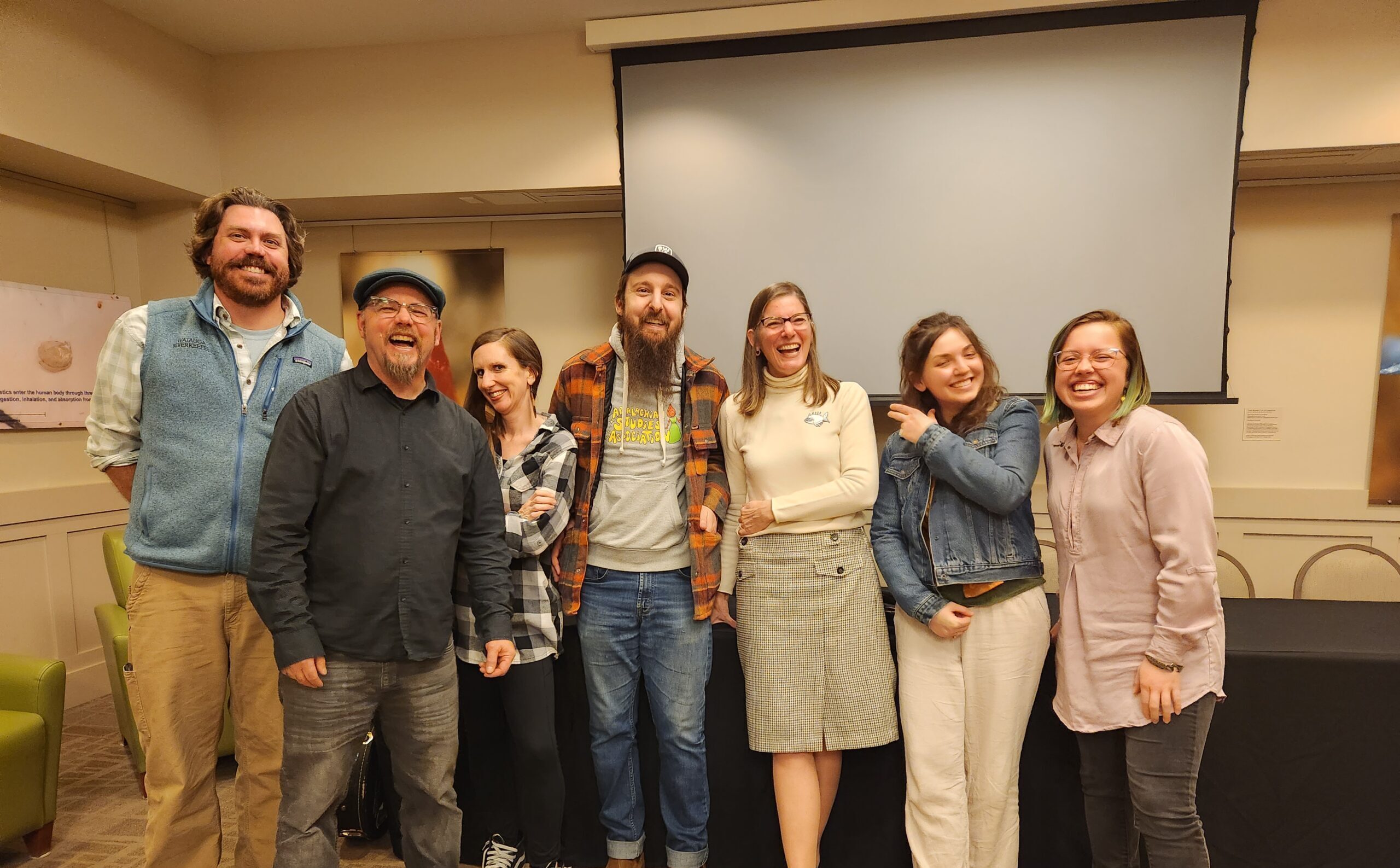…the water I touch as it flows by my home in Ashe County, North Carolina touches millions of others downstream.
Tom Hansell, like most volunteers, is a busy human juggling teaching, film making, writing, and so much more, and to top it off, he is our Co Chair for the 2024 New River Symposium. Always steady as he leads our TAC meetings, Tom exudes calm. I imagine he is the the type of person you want by your side at the end of the world. I recently watched his documentary, Electricity Fairy, and was struck that while this film is 14 years old, it is just as relevant today as it was then. The film is a thoughtful look at our nations addiction to fossil fuels through the lens of electricity. I look forward to seeing and reading more of his work.
You have quite the body of work for anyone, let alone a busy professor. I must confess I was unaware that you were an author, filmmaker, installation artist, activist, teacher, sculptor. The list seems to go on endlessly. Which one, if it’s just one, came first?
I actually think I was an environmentalist first. The rest of my work has evolved from the idea that how we treat our planet’s land and the water is tied to how we treat the people who live here. This idea of environmental justice underlies all of my work.
I read this quote on your website: “My work highlights hidden connections between local ecosystems and the human cultures who inhabit these places.” What are the hidden connections? Aren’t they all in plain sight?
Some connections are easier to see than others. For example, it is easy to forget that the human body is two-thirds water. What is in the water is also in us, which means that objects such as microplastics or pesticides that are invisible to the human eye travel through the water into our body. The New River feeds the Ohio River, which provides drinking water to more than five million people. This means that the water I touch as it flows by my home in Ashe County, North Carolina touches millions of others downstream. Understanding those connections will help us make better choices about how to protect the water that sustains us.
In your 2018 interview with Elizabeth Catte, you said “ Rivers and mountains have the power to sustain people regardless of political affiliation. Their presence reminds us how temporary and fragile human life is and how essential it is to find simple ways to support each other during our brief time in this place.” What ways do you see people connecting to each other in the New River Watershed?
The simplest answer to this question is that we all drink the same water and breathe the same air. Many of us also eat locally, relying on food produced by our neighbors in this watershed. Digging a bit deeper, I am interested in how water and culture are intertwined. Certainly, river recreation such as paddling, floating, or fishing can connect people who participate in those activities. There is also a deep tradition of music that has blended the cultures that have settled along the New River. Many traditional Appalachian songs including Waterbound, New River Train, and the East River Mountain Blues were all written or recorded by artists in the New River watershed. Most arrangements of these songs feature instruments from Africa, such as the banjo, mixing with instruments from the British Isles, such as the fiddle. The roots of traditional Appalachian dance styles can also be traced to a mix of European, African, and Indigenous traditions. These traditions, like the water, bring together the many cultures that have called the New River home.
You’ve been working on the project “The Ancient New” for over a decade, trying to spotlight the waste generated from society’s increasing appetite for stuff in films such as “Does Water Die?” and “The Trash Trout Motion Picture Show.” What’s next for this project?
The Ancient New project will culminate in a series of mini-festivals along the New River. The project includes participatory workshops and performances designed to amplify efforts to provide equitable access to fresh water. My idea is to collaborate with individuals and organizations along the New River, drawing on place-based knowledge to build understanding of how water connects us.
The events will combine activities such as water monitoring and river cleanups with workshops led by local artists teaching storytelling, music, dance and crafts. After each workshop, the multidisciplinary team of artists will create a performance specific to each place. For example, musicians may share river songs from their community, dancers might adapt traditional square dance patterns to mimic the flow of water, or weavers may make projection screens out of salvaged plastic to display background images during the performance.
We will start testing this approach with a few workshops and performances during the Saved by the Salamander Day at the Old Store in Grassy Creek, NC on May 18 and in June at the Riverview Community Center in Creston, NC. Our plan is to expand these local events into a regional, then national tour. Stay tuned for more detail as this project develops!
I’ve asked this question before of some of our spotlight volunteers – How can we do better and be better stewards of the New River?
First, get wet! Experience the river by spending time with it. Then, connect to others who are helping protect the water and ask what you can do to support their work.


